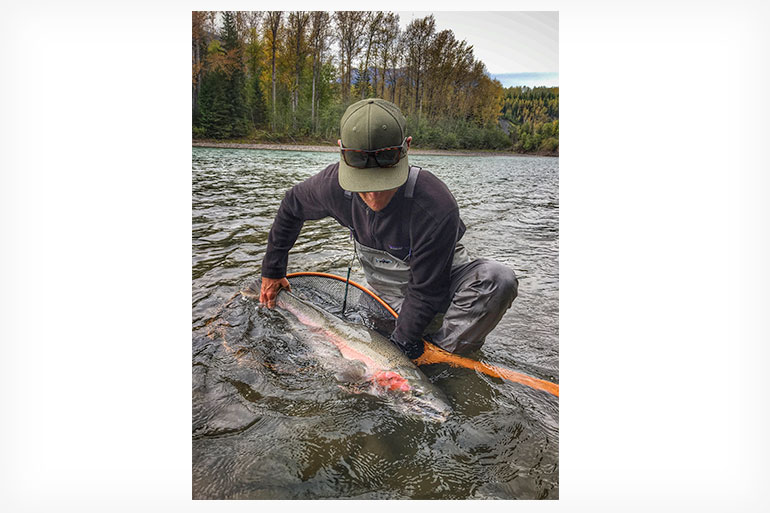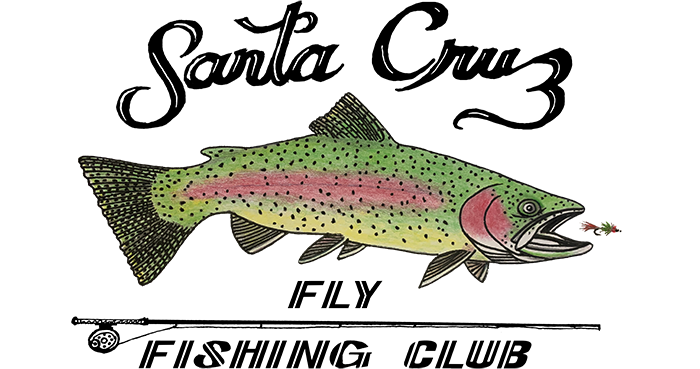
A few years ago, I posted an article in the newsletter with science-based conservation tips for fly anglers at: https://www.santacruzflyfishing.org/tag/november-2021/#post-3950. With the trend toward increased in angling pressure, drought and higher temperatures, I thought it would be a good time to revisit this subject. I found an article on the Fly Fishers International website that presents some great principles and practices for individual anglers that can help increase the survival rate of fish. Many of these were found in my previous article, but are certainly worth repeating. I must admit I haven’t always adhered to all these best practices, but I’m trying to be aware of them and become a better conservation-minded angler.
Fly Fishing Practices
Practice catch and release to help sustain and manage the fishery. This is especially important with all the challenges fish face. Land fish quickly. The longer the fish is played the more exhausted and stressed it becomes. Keep fish in the water. When removing the fly, keep the fish in the water so it can keep breathing. This is usually easier with a aid of a net.
Handle fish with care. Wet the fish and support it horizontally with both hands. Try not to squeeze too hard. This can be difficult when trying to control a slippery, lively fish. Avoid suspending the fish by its lip. Use barbless or crimped-barb hooks as they are easier/quicker to remove with less harm to the fish. It’s easier to remove a barbless hook from your body and clothing too!. A hemostat or other hook removal tool can be useful. If the fly is deep in the fish, cut the line off close to the fly as possible. When photographing fish, minimize time out of the water. Keep the fish in the water until the photographer says they are ready. When releasing, if the fish appears sluggish, gently hold it in the stream with its head facing into the current until it is ready to swim off. Carry a stream thermometer. When fishing for cold water fish—like trout—don’t fish when the water temperature approaches 70 degrees F.
Fly Fishing Gear and Flies
Use appropriate sized rod, reel, line and tippet that will allow landing your target species as quick as possible. Carry an effective hook removal tool. Use a rubber net whenever possible to help minimize damage to the fish’s skin and gills. Always use barbless or crimped barb hooks.
Protecting Fish, Water and Environment
Eliminate lead from the environment—BB weights and wire wrap for flies. Make sure you clean and dry (or other practical and effective method) equipment that contacts water when moving to a different watershed—especially when a body of water is known to have invasive critters like quagga mussels or New Zealand Mudsnails. Check local regulations for wading boot restrictions—felt soles are not permitted in some waters. Pack out all your trash, including tippet. Avoid stepping on spawning beds and redds. Don’t target actively spawning fish. Try to practice “leave no trace”.
For more details on this subject, go to: https://www.flyfishersinternational.org/Conservation/Ethos/Responsible-Fishing-Practices
Posted on September 26th, 2023
